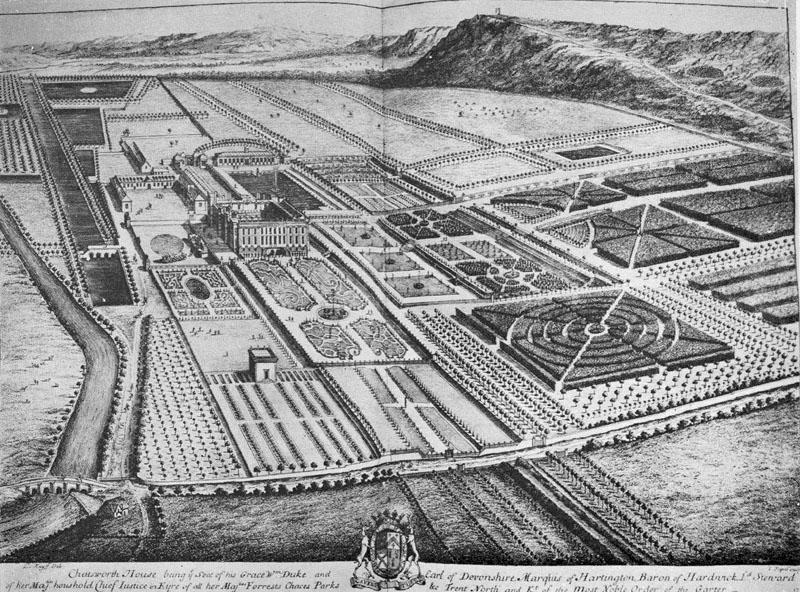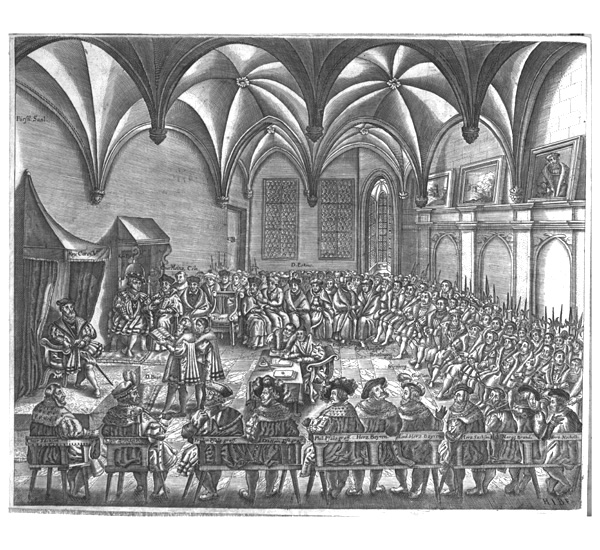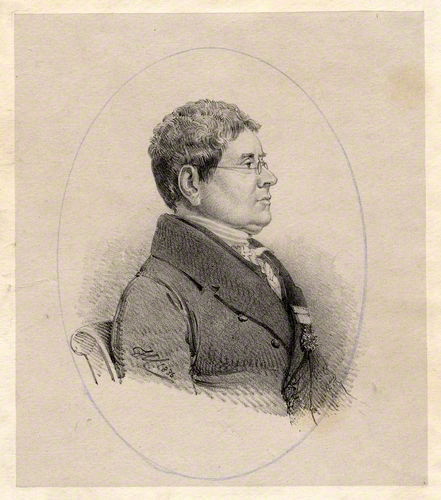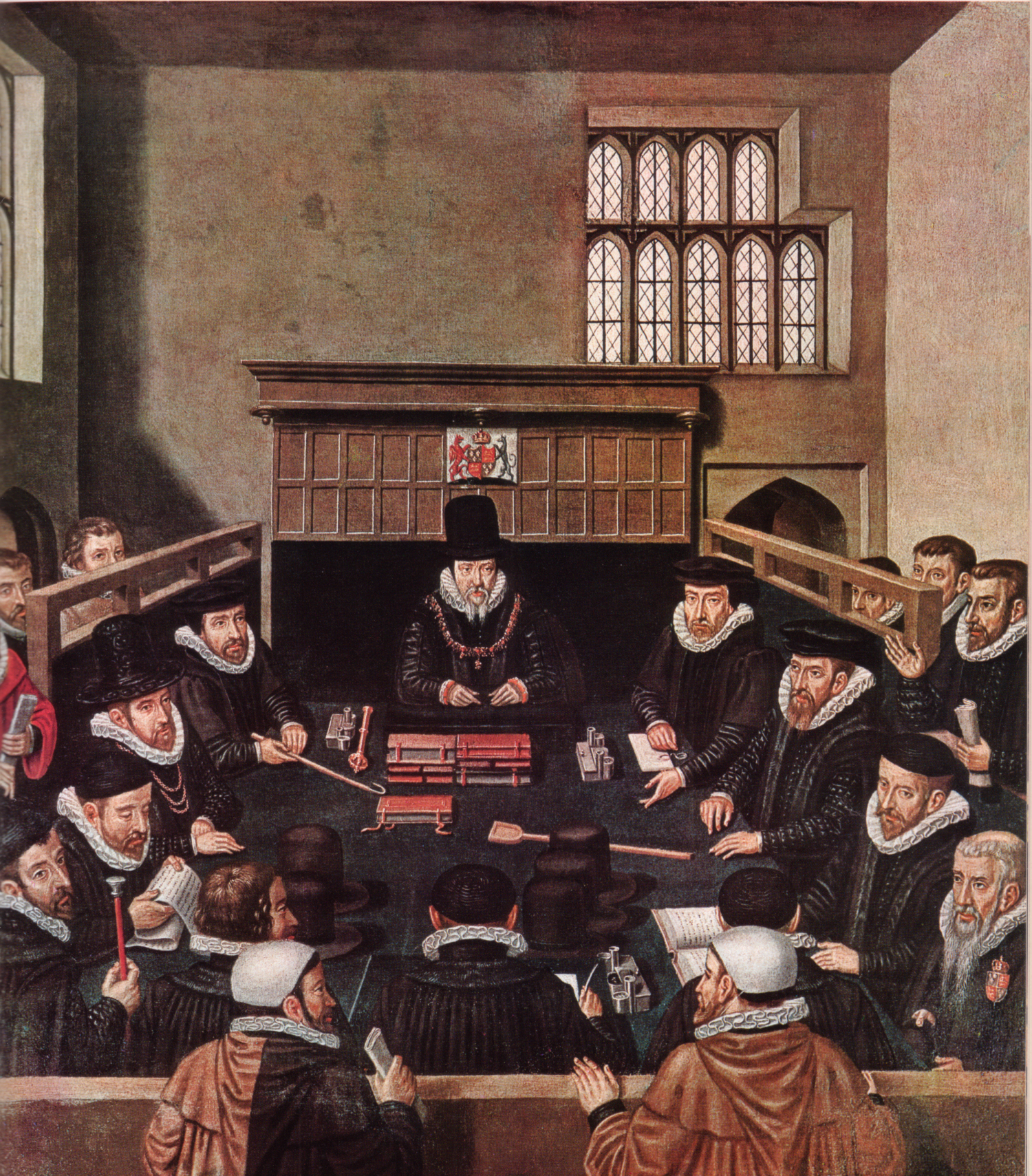|
Elizabeth Stuart, Countess Of Lennox
Elizabeth Stuart, Countess of Lennox née Cavendish (31 March 1555 – 16 January 1582) was an English noblewoman and the wife of Charles Stuart, 1st Earl of Lennox. She was the mother of Arbella Stuart, a close relation to the English and Scottish thrones. Family Elizabeth Cavendish was born in Chatsworth House, Derbyshire, on 31 March 1555, the daughter of Bess of Hardwick and her second husband Sir William Cavendish. Catherine Grey was one of her godmothers. Bess was a Lady of the Bedchamber to Queen Elizabeth I and became one of the wealthiest women in England. Elizabeth Cavendish had seven siblings, two of whom died in early infancy. Marriage to the Earl of Lennox In 1574, Elizabeth Cavendish secretly married Charles Stuart, 1st Earl of Lennox, the younger brother of Henry Stuart, Lord Darnley, and a claimant to the English throne. Queen Elizabeth I became enraged at the two mothers for arranging such a controversial marriage without her permission. The Queen sent El ... [...More Info...] [...Related Items...] OR: [Wikipedia] [Google] [Baidu] |
Chatsworth House
Chatsworth House is a stately home in the Derbyshire Dales, north-east of Bakewell and west of Chesterfield, Derbyshire, Chesterfield, England. The seat of the Duke of Devonshire, it has belonged to the House of Cavendish, Cavendish family since 1549. It stands on the east bank of the River Derwent, Derbyshire, River Derwent, across from hills between the Derwent and River Wye, Derbyshire, Wye valleys, amid parkland backed by wooded hills that rise to Moorland, heather moorland. The house holds major collections of paintings, furniture, Old Master drawings, neoclassical sculptures and books. Chosen several times as Britain's favourite country house, it is a Grade I listed property from the 17th century, altered in the 18th and 19th centuries. In 2011–2012 it underwent a £14-million restoration. The owner is the Chatsworth House Trust, an independent charitable foundation formed in 1981, on behalf of the Cavendish family. History 11th–16th centuries The name 'Chatsworth ... [...More Info...] [...Related Items...] OR: [Wikipedia] [Google] [Baidu] |
Tuberculosis
Tuberculosis (TB), also known colloquially as the "white death", or historically as consumption, is a contagious disease usually caused by ''Mycobacterium tuberculosis'' (MTB) bacteria. Tuberculosis generally affects the lungs, but it can also affect other parts of the body. Most infections show no symptoms, in which case it is known as inactive or latent tuberculosis. A small proportion of latent infections progress to active disease that, if left untreated, can be fatal. Typical symptoms of active TB are chronic cough with hemoptysis, blood-containing sputum, mucus, fever, night sweats, and weight loss. Infection of other organs can cause a wide range of symptoms. Tuberculosis is Human-to-human transmission, spread from one person to the next Airborne disease, through the air when people who have active TB in their lungs cough, spit, speak, or sneeze. People with latent TB do not spread the disease. A latent infection is more likely to become active in those with weakened I ... [...More Info...] [...Related Items...] OR: [Wikipedia] [Google] [Baidu] |
16th-century English Nobility
The 16th century began with the Julian year 1501 (represented by the Roman numerals MDI) and ended with either the Julian or the Gregorian year 1600 (MDC), depending on the reckoning used (the Gregorian calendar introduced a lapse of 10 days in October 1582). The Renaissance in Italy and Europe saw the emergence of important artists, authors and scientists, and led to the foundation of important subjects which include accounting and political science. Copernicus proposed the heliocentric universe, which was met with strong resistance, and Tycho Brahe refuted the theory of celestial spheres through observational measurement of the 1572 appearance of a Milky Way supernova. These events directly challenged the long-held notion of an immutable universe supported by Ptolemy and Aristotle, and led to major revolutions in astronomy and science. Galileo Galilei became a champion of the new sciences, invented the first thermometer and made substantial contributions in the fields of phy ... [...More Info...] [...Related Items...] OR: [Wikipedia] [Google] [Baidu] |
Scottish Countesses
Scottish usually refers to something of, from, or related to Scotland, including: *Scottish Gaelic, a Celtic Goidelic language of the Indo-European language family native to Scotland *Scottish English *Scottish national identity, the Scottish identity and common culture *Scottish people, a nation and ethnic group native to Scotland * Scots language, a West Germanic language spoken in lowland Scotland * Symphony No. 3 (Mendelssohn), a symphony by Felix Mendelssohn known as ''the Scottish'' See also *Scotch (other) *Scotland (other) *Scots (other) *Scottian (other) *Schottische The schottische is a partnered country dance that apparently originated in Bohemia. It was popular in Victorian-era ballrooms as a part of the Bohemian folk-dance craze and left its traces in folk music of countries such as Argentina (Spanish ... * {{disambiguation Language and nationality disambiguation pages ca:Escocès ... [...More Info...] [...Related Items...] OR: [Wikipedia] [Google] [Baidu] |
16th-century English Women
The 16th century began with the Julian year 1501 (represented by the Roman numerals MDI) and ended with either the Julian or the Gregorian year 1600 (MDC), depending on the reckoning used (the Gregorian calendar introduced a lapse of 10 days in October 1582). The Renaissance in Italy and Europe saw the emergence of important artists, authors and scientists, and led to the foundation of important subjects which include accounting and political science. Copernicus proposed the heliocentric universe, which was met with strong resistance, and Tycho Brahe refuted the theory of celestial spheres through observational measurement of the 1572 appearance of a Milky Way supernova. These events directly challenged the long-held notion of an immutable universe supported by Ptolemy and Aristotle, and led to major revolutions in astronomy and science. Galileo Galilei became a champion of the new sciences, invented the first thermometer and made substantial contributions in the fields of phy ... [...More Info...] [...Related Items...] OR: [Wikipedia] [Google] [Baidu] |
Cavendish Family
The Cavendish (or de Cavendish) family ( ; ) is a British noble family, of Anglo-Norman origins (though with an Anglo-Saxon name, originally from a place-name in Suffolk). They rose to their highest prominence as Duke of Devonshire and Duke of Newcastle. Leading branches have held high offices in English and then in British politics, especially since the Glorious Revolution of 1688 and the participation of William Cavendish (then Earl of Devonshire) in the ''Invitation to William'', though the family appears to date to the Norman Conquest of England, with ''Cavendish'' being used (in one form or another) as a surname since the beginning of the 13th century. As a place-name, it is first recorded in 1086. Early history As a place-name, it is first recorded as in 1086 in the ''Domesday Book'', and appears to have a meaning of 'Cafna's Pasture', from personal byname (from 'bold, daring'), and 'enclosed pasture'. By 1201, it was in use as the surname (borne by one Simon ... [...More Info...] [...Related Items...] OR: [Wikipedia] [Google] [Baidu] |
1582 Deaths
1582 (Roman numerals, MDLXXXII) was a common year starting on Monday in the Julian calendar, and a common year starting on Friday (link will display full calendar) of the Proleptic Gregorian calendar. This year saw the beginning of the Gregorian calendar switch, when the papal bull ''Inter gravissimas'' introduced the Gregorian calendar, adopted by Spain, Portugal, the Polish–Lithuanian Commonwealth and most of present-day Italy from the start. In these countries, the year continued as normal through Thursday, October 4; the next day became Friday, October 15, like a common year starting on Friday. France followed two months later, letting Sunday, December 9 be followed by Monday, December 20. Other countries continued using the Julian calendar, switching calendars in later years, and the complete conversion to the Gregorian calendar was not entirely done until 1923. Events January–March * January 2 – University of Würzburg is refounded. * January 15 – Russia ... [...More Info...] [...Related Items...] OR: [Wikipedia] [Google] [Baidu] |
1555 Births
Year 1555 ( MDLV) was a common year starting on Tuesday of the Julian calendar. Events January–March * January 22 – The Kingdom of Ava in Upper Burma falls. * February 2 – The Diet of Augsburg begins. * February 4 – John Rogers is burned at the stake at Smithfield, London, becoming the first of the 284 Protestant martyrs of the English Reformation to be killed during the five and one-half year reign of Queen Mary I of England. His death is followed within the week by that of Laurence Saunders on February 8 in Coventry, and Rowland Taylor, Rector of Hadleigh, Suffolk, and John Hooper, deposed Bishop of Gloucester on February 9. * February 26 – The Muscovy Company is chartered in England to trade with the Tsardom of Russia and Richard Chancellor negotiates with the Tsar. * March 25 – Valencia, Venezuela, is founded by Captain Alonso Díaz Moreno. April–June * April 9 – Marcello Cervini degli Spannocchi is unanimously ... [...More Info...] [...Related Items...] OR: [Wikipedia] [Google] [Baidu] |
Henry Ellis (librarian)
Sir Henry Ellis (29 November 177715 January 1869) was an English librarian and antiquarian, for a long period principal librarian at the British Museum. Early years Born in London, Henry Ellis was educated at the Mercers' School, and at Merchant Taylors' School, Northwood, Merchant Taylors' School, where his brother, the Rev. John Joseph Ellis, was assistant-master for forty years. Having gained one of the Merchant Taylors' exhibition (scholarship), exhibitions at St John's College, Oxford, he matriculated in 1796. Librarian In 1798, through his friend John Price (librarian), John Price, Ellis was appointed one of the two assistants in the Bodleian Library, the other being his future colleague in the British Museum Henry Hervey Baber. He took the degree of B.C.L. in 1802. He was a Fellow of St John's till 1805. In 1800 he was appointed a temporary assistant in the library of the British Museum, and in 1805 he became assistant-keeper of printed books under William Beloe. The the ... [...More Info...] [...Related Items...] OR: [Wikipedia] [Google] [Baidu] |
William Cecil, 1st Baron Burghley
William Cecil, 1st Baron Burghley (13 September 15204 August 1598), was an English statesman, the chief adviser of Elizabeth I, Queen Elizabeth I for most of her reign, twice Secretary of State (England), Secretary of State (1550–1553 and 1558–1572) and Lord High Treasurer from 1572. In his description in the Encyclopædia Britannica Eleventh Edition, ''Encyclopædia Britannica'' Eleventh Edition, Albert Pollard, A.F. Pollard wrote, "From 1558 for forty years the biography of Cecil is almost indistinguishable from that of Elizabeth and from the history of England." Cecil set as the main goal of English policy the creation of a united and Protestant British Isles. His methods were to complete the control of Ireland, and to forge an alliance with Scotland. Protection from invasion required a powerful Royal Navy. While he was not fully successful, his successors agreed with his goals. In 1587, Cecil persuaded the Queen to order the Execution of Mary, Queen of Scots, executio ... [...More Info...] [...Related Items...] OR: [Wikipedia] [Google] [Baidu] |
George Talbot, 6th Earl Of Shrewsbury
George Talbot, 6th Earl of Shrewsbury, 6th Earl of Waterford, 12th Baron Talbot, KG, Earl Marshal (c. 1522/1528 – 18 November 1590) was an English magnate and military commander. He also held the subsidiary titles of 15th Baron Strange of Blackmere and 11th Baron Furnivall. He was best known for his tenure as keeper of Mary, Queen of Scots between 1568 and 1585, his marriage to his second wife Elizabeth Talbot (Bess of Hardwick), as well as his surviving collection of written work. Life and career Talbot was the only son of Francis Talbot, 5th Earl of Shrewsbury and Mary Dacre. In early life he saw active military service, when he took part in the invasion of Scotland under the Protector Somerset. He was sent by his father in October 1557 to the relief of Thomas Percy, 7th Earl of Northumberland pent up in Alnwick Castle. He then remained for some months in service on the border, with five hundred horsemen under his command. :s:Talbot, George, sixth Earl of Shrewsb ... [...More Info...] [...Related Items...] OR: [Wikipedia] [Google] [Baidu] |
Tower Of London
The Tower of London, officially His Majesty's Royal Palace and Fortress of the Tower of London, is a historic citadel and castle on the north bank of the River Thames in central London, England. It lies within the London Borough of Tower Hamlets, which is separated from the eastern edge of the square mile of the City of London by the open space known as Tower Hill. It was founded toward the end of 1066 as part of the Norman Conquest. The White Tower (Tower of London), White Tower, which gives the entire castle its name, was built by William the Conqueror in 1078 and was initially a resented symbol of oppression, inflicted upon London by the new Normans, Norman ruling class. The castle was also used as a prison from 1100 (Ranulf Flambard, Bishop of Durham) until 1952 (the Kray twins), although that was not its primary purpose. A grand palace early in its history, it served as a royal residence. As a whole, the Tower is a complex of several buildings set within two concentric ring ... [...More Info...] [...Related Items...] OR: [Wikipedia] [Google] [Baidu] |









